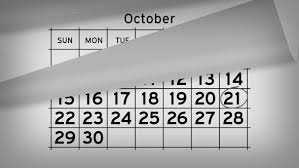Starting a business can feel like facing a giant mountain. So many things to juggle, so many pieces to fit together, it’s easy to feel lost and overwhelmed. And one of the biggest hurdles? The business plan. It sounds intimidating, complicated, and a huge time commitment. But what if it didn’t have to be? What if you could boil down the essentials into a simple, manageable process? That’s where the 3-Step Business Plan comes in. This approach focuses on the core essentials, giving you a clear path forward without getting bogged down in the details.
This isn’t about taking shortcuts. It’s about putting your energy where it counts most, especially when you’re just starting out. It’s about creating a flexible document that you can tweak and refine as your business grows and learns. So, let’s dive into these three crucial steps:

Step 1: Discover Your “Why” (Your Vision)
This is the very heart of your business. It’s not just about what you’re selling, but why you’re selling it. What problem are you solving for people? What need are you meeting? What kind of difference do you want to make in the world? This step is all about getting crystal clear on your purpose and what drives you.
- Your Unique Value: What special benefit do you offer? Why should customers choose you over everyone else? Be specific! Instead of just saying “We sell clothes,” try something like, “We create stylish, sustainable clothing that empowers women to feel confident and express their individuality.”

- Your Ideal Customer: Who are the people you’re trying to reach? Get to know them inside and out. What are their backgrounds, their needs, their frustrations? The better you understand your audience, the better you can tailor what you offer and how you talk to them.

- Your Guiding Statement (Mission): This is like your North Star. It’s a short, powerful statement that sums up your business’s purpose and what you’re trying to achieve. It should be clear, inspiring, and easy for anyone to grasp.

Step 2: Map Out Your “How” (Your Strategy)
Now that you’re clear on why you’re doing this, it’s time to figure out how you’ll actually make it happen. This step is about the practical side of your business.
- Getting the Word Out (Marketing & Sales): How will you connect with your ideal customers? What channels will you use to reach them? How will you turn interested people into paying customers? Think about your website, your social media presence, and any other ways you might get your message out there.

- Making it Happen (Operations): How will you actually create or deliver your product or service? What resources will you need? What processes will you put in place? This is where you think about things like logistics, manufacturing, and how you’ll take care of your customers.
- The Numbers Game (Financial Projections): You don’t need to be a financial whiz at this stage, but you should have a basic idea of what it will cost to get started, how much you expect to make, and what your expenses will be. This will help you see if your business idea is viable and if you might need to look for funding.

Step 3: Set Your Sights (Your Goals)
This is where you turn your vision and your strategy into concrete, measurable steps. It’s about figuring out what you need to do and when you need to do it.
- SMART Goals: Make sure your goals are Specific, Measurable, Achievable, Relevant, and Time-bound. Instead of just saying “Get more customers,” try something like, “Gain 50 new subscribers to our email list in the next month.”

- Tracking Your Progress (KPIs): Figure out the key things you’ll track to see if you’re making progress toward your goals. These could be things like website visits, how many people are signing up for your email list, or how many sales you’re making.

- Putting it on the Calendar (Timeline): Set realistic deadlines for achieving your goals. This will help you stay focused and keep you on track.

The 3-Step Business Plan is a work in progress. It’s meant to be revisited and changed as your business grows and you learn more. Don’t be afraid to adapt it as you get to know your market and your customers better. The important thing is to start with a clear vision, a solid strategy, and goals you can actually achieve. By focusing on these three core elements, you can create a business plan that’s not just a document gathering dust on a shelf, but a real roadmap to your success. And remember, keeping things simple isn’t about being less ambitious; it’s about being more effective. seemore:
